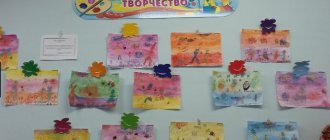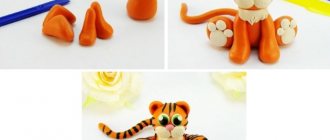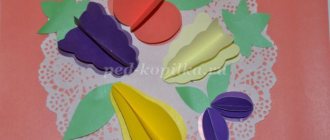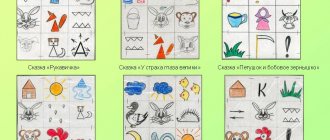1. Eastern administrative district. GBOU Gymnasium No. 1476.
Topics of speeches:
1. “Content of the main educational program of a preschool educational organization in the educational field “Artistic and Aesthetic Development”, section “Visual Activities””, senior teacher N. V. Kharitonova.
2. “Perception as a necessary part of the artistic and creative abilities of preschool children,” educational psychologist I. A. Sodomova.
3. “Formation of an aesthetic attitude towards the environment in children with disabilities (TN) in the process of implementing AOOP”, teacher-speech therapist A. S. Popova.
4. Summary of continuous educational activities in the senior group on the topic “Butterflies in the meadow”, teacher E.V. Guzenko.
The event materials can be found at the link: https://drive.google.com/drive/folders/0Bwy77u-Zt1Fwck4td3NtaEYxYU0?usp=sharing
2. Eastern administrative district. GBOU secondary school No. 1852.
Topics of speeches:
1. “Personally oriented approach to the artistic and aesthetic development of preschool children,” senior teacher V. I. Grashina.
2. “Russian nesting doll as a means of artistic and aesthetic development of children of senior preschool age,” teachers T. G. Levkina, S. V. Kazakova.
3. “Formation of creative activity of preschool children by means of planar design”, teachers of GBOU School No. 1269 E. I. Pavlova, L. V. Kiryanina.
4. “The use of children's design elements in creating an educational space in preschool groups,” teachers A. Yu. Popova, L. N. Dragunova.
5. “Non-traditional methods of drawing in older preschool age”, teachers L. M. Zavrazhnova, E. V. Gavrilova.
6. “Plasticineography as a means of developing the artistic and creative abilities of preschool children,” teacher of the State Budget Educational Institution MMG V. A. Dmitrieva.
7. “Artistic and aesthetic development of children through project activities. Project “Animals of Hot Countries”, educators V. A. Krut, M. Yu. Romashkova.
8. Master class materials:
- “Plastinography. Bouquet in a basket”, teacher of GBOU MMG V. A. Dmitrieva;
— “Drawing a landscape in watercolors by children of senior preschool age,” teacher M. Yu. Romashkova.
The event materials can be found at the link: https://drive.google.com/drive/folders/0Bwy77u-Zt1FwT09QWmZ1bDlERDg?usp=sharing
3. Western administrative district. GBOU Gymnasium No. 1542.
Topics of speeches:
1. “Fine creativity of preschool children as a cultural practice,” teacher I. S. Morozova.
2. “Stages of development of children's drawings,” educational psychologist S. S. Grigorieva.
3. “Organization of a developing subject-spatial environment for artistic and aesthetic development,” educators N. S. Barinova, E. P. Gnidyuk.
4. Materials of the master class “Paper plastics”, teacher L. S. Khokhlova.
5. Continuous educational activities:
- in the younger group on the topic “A matryoshka came to visit us,” teacher N.V. Shishkina;
- in the preparatory group on the topic “Creative workshop of folk crafts”, teacher I. N. Fedorenko.
The event materials can be found at the link: https://drive.google.com/drive/folders/0Bwy77u-Zt1FwNHR2TmkzQjI0RGM?usp=sharing
4. Western administrative district. GBOU Gymnasium No. 1596.
Topics of speeches:
1. “Planning and organization of work on visual activities in accordance with the requirements of the Federal State Educational Standard for Preschool Education,” senior teacher S. A. Kotova.
2. Practical material:
2.1. Summaries of continuous educational activities:
- in the second junior group on the theme “Fun Train”, teachers V.V. Nadeikina, L.N. Mikheeva;
- in the middle group for designing from paper with origami elements on the theme “Magic Birds of Spring”, senior teacher S. A. Kotova, teachers M. V. Seliverstova, T. S. Vavilova;
- in the senior group for appliqué on fabric on the theme “The Great African Journey”, teachers L. I. Ogurtsova, A. Kh. Chebakova;
- in the preparatory group on the topic “What the telescope told us,” teachers T.V. Kapkina, T.I. Maryina.
2.2. Materials of the master class on the topic “Method of artistic design in working with preschool children”, teacher of additional education E. I. Koverya.
The event materials can be found at the link: https://drive.google.com/drive/folders/0Bwy77u-Zt1FwSWppR2VqdldCdmM?usp=sharing
5. Western administrative district. GBOU School No. 1434.
Topics of speeches:
1. “Federal state educational standard for preschool education. Section of the main educational program of a preschool educational organization of the educational region "Artistic and aesthetic development", section "Visual activities"", senior teacher N.V. Goloshchuk.
2. “Development of creative abilities of children of primary preschool age through the use of waste material,” additional education teacher N.V. Bakunina.
3. “Introducing children to art,” teachers O. G. Sabaeva, S. V. Semenova.
4. “Millefiori - an amazing technique for working with plasticine in kindergarten,” teacher T. S. Oreshina.
5. “The Magic World of Napkins”, teacher O. B. Sokova.
6. “Development of creative abilities and giftedness of children through additional education,” additional education teacher I. A. Tokareva.
7. “Fascinating drawing using non-traditional techniques with children 4–7 years old,” additional education teacher M. K. Filyushina.
8. “Artistic and aesthetic development of young children,” additional education teacher N. Yu. Chekmeneva.
9. Materials of a master class on drawing on the topic “Spring Landscape”, teacher Z. A. Kostenko.
10. Summaries of continuous educational activities:
- for a group of different ages on the topic “Creating a painting-illustration for the fairy tale “Kolobok””, teacher A. Yu. Smirnova;
- for children of the older group on the topic “A happy holiday - Easter”, teacher A. Yu. Sryvkina.
The event materials can be found at the link: https://drive.google.com/drive/folders/0Bwy77u-Zt1FweVo2QjRNTDBWUlE?usp=sharing
6. Northern administrative district. GBOU School No. 2098.
Topics of speeches:
1. “The use of computer technologies in working with preschoolers,” teacher N. L. Mamaeva, additional education teacher A. L. Vorobyova.
2. “Using the co-creation method in working with younger preschoolers,” teacher A. A. Razvalova.
3. “Use of textured paper in the application process,” teacher O. Yu. Trandina.
4. “Use of quest technology as an interactive educational environment to enhance creative activity in preschool children,” teacher N. A. Sokolova.
5. “Depiction of a person by preschool children,” teacher Yu. A. Mamontova.
6. Scenario of entertainment for children of senior preschool age “City of Masters”, music director L. E. Kolomin.
The event materials can be found at the link: https://drive.google.com/drive/folders/0Bwy77u-Zt1FwMTlGckgyMHRXU3c?usp=sharing
7. North-Western Administrative District. GBOU School No. 1874.
Topics of speeches:
1. “FSES DO. Educational field “Artistic and Aesthetic Development”, section “Visual Activities”, senior teacher M. N. Vasilyeva.
2. “Technologies for the development of children’s visual creativity in the context of the implementation of the Federal State Educational Standard for Education,” teacher E. I. Ptushka.
3. “Organization of independent artistic and creative activities of preschool children,” teachers G. V. Chemodanova, V. V. Shiltsina.
4. “Formation of design as a universal mental ability underlying creativity,” teacher I. N. Kazakova.
5. “Interaction with parents on the artistic and aesthetic development of preschool children,” teacher S. V. Ermakova.
6. “Kinetic sand. Development of creative abilities of preschool children,” teacher E. V. Lapotnikova, senior teacher S. A. Avanesova.
7. Summaries of continuous educational activities:
- in the senior group on the theme “Golden Khokhloma”, teacher V.V. Shiltsina, music director O.F. Bezlepkina;
- in the preparatory group on the topic “Miracle Sand”, teacher E.V. Lapotnikova, senior teacher S.A. Avanesova.
The event materials can be found at the link: https://drive.google.com/drive/folders/0Bwy77u-Zt1FwSHl1WFJnWUdPZzg?usp=sharing
8. North-Eastern Administrative District. GBOU School No. 1412.
Topics of speeches:
1. “Introducing preschoolers to art,” teacher N. L. Mamykina.
2. “Isotherapy is the mirror of the soul,” educational psychologist A. Yu. Zozulinskaya.
3. “Creating conditions for the artistic and aesthetic development of children,” educators T. V. Sokolkova, N. N. Mareeva.
4. “Master class as a form of interaction between family and kindergarten,” teachers E. V. Potapova, A. Yu. Shevchuk.
5. “Development of creative abilities of children of senior preschool age through application using the Iris Folding technique,” teachers N.V. Zhukova, N.S. Kireeva.
6. “Plasticineography as a method for developing fine motor skills in children,” teachers N.V. Ostologova, E.I. Chernyshova.
7. “Use of non-traditional drawing techniques in kindergarten,” teacher T. V. Borisova.
The event materials can be found at the link: https://drive.google.com/drive/folders/0B17F1yvuel8bZVFRbXdpTDNFSDg?usp=sharing
9. North-Eastern Administrative District. GBPOU "1st IOC".
Topics of speeches:
1. “FSES DO. Section of the main educational program of the preschool educational organization of the educational region "Artistic and aesthetic development", section "Visual activities"", senior teacher Yu. V. Mamelina, teacher I. A. Legashova.
2. “Methods of drawing houses in different age groups,” teacher I. A. Legashova.
3. Summaries of continuous educational activities in drawing:
- in the younger group on the topic “Fluffy Chickens”, teacher T. A. Garbuzova;
- in the preparatory group for school on the topic “Poppies”, teacher F. A. Kutsenko;
- in a preparatory group for school on the topic “Painting a Zhostovo tray”, teacher N.M. Silkina.
The event materials can be found at the link: https://drive.google.com/drive/folders/0Bwy77u-Zt1FwMUIwQ2g2QlRvNjA?usp=sharing
10. North-Eastern administrative district. GBOU Gymnasium No. 1503.
Topics of speeches:
1. “The use of a variety of visual materials to develop children’s creative abilities,” teachers E. A. Lubina, V. V. Ulitina.
2. “Modern educational technologies in the system of work to familiarize children with folk arts and crafts,” teacher E. V. Khamidullina.
The event materials can be found at the link: https://drive.google.com/drive/folders/0Bwy77u-Zt1FwVHhOeURBQ1haWWc?usp=sharing
11. North-Eastern Administrative District. GBOU School No. 285.
Topics of speeches:
1. “Federal State Educational Standard for Preschool Education. Educational field “Artistic and aesthetic development”. Section “Visual activities”, senior teacher N. A. Atroshchenko.
2. “The use of project activities in the artistic and aesthetic development of preschool children. Creative project “Fairy Tale, Come to Life”, social teacher A.V. Vitukhina.
3. “Non-traditional techniques in working with paper,” teacher V. N. Chukanova.
The event materials can be found at the link: https://drive.google.com/drive/folders/0Bwy77u-Zt1FwQ3dqQzFQakJVWFE?usp=sharing
12. North-Eastern Administrative District. GBOU Gymnasium No. 1577.
Topics of speeches:
1. “Visual activity. Modeling”, teacher A.K. Klubkova.
2. “Methods of teaching drawing to preschool children,” teacher O. E. Koroleva.
3. “Visual activities. Application”, teacher O. S. Yakovleva.
4. Summary of continuous educational activities in the preparatory group for school on the topic “Journey to the world of art”, teacher M. A. Fedotova, teacher-organizer E. G. Ilyicheva.
The event materials can be found at the link: https://drive.google.com/drive/folders/0Bwy77u-Zt1FwZ2NtMWpxMnA3MnM?usp=sharing
13. North-Eastern Administrative District. GBOU TsO No. 1449.
Topics of speeches:
1. “Development and realization of the creative potential of children of senior preschool age through non-traditional technologies of visual activity,” teacher S. V. Struchkova.
2. “Plasticineography as a means of developing artistic and creative abilities in preschool children,” teacher T. E. Chikanova.
The event materials can be found at the link: https://drive.google.com/drive/folders/0Bwy77u-Zt1FwR2FfOVJzczlnVnM?usp=sharing
14. Southern Administrative District. GBOU School No. 1034.
Topics of speeches:
1. “Development of the creative abilities of a child with disabilities,” speech therapist M. B. Rabinovich, teacher L. Z. Gudkova.
2. Summary of continuous educational activities in the visual arts preparatory group for school, teachers E. E. Evseenkova, G. E. Zorina.
The event materials can be found at the link: https://drive.google.com/drive/folders/0Bwy77u-Zt1FwaFp3ckNneF9DV2M?usp=sharing
15. South-Eastern Administrative District. GBOU School No. 2092.
Topics of speeches:
1. “Federal State Educational Standard for Preschool Education. Educational field “Artistic and Aesthetic Development”, section “Visual Activities”, senior methodologist G. R. Gasanova.
2. “Virtual excursions to the museum as a means of developing aesthetic feelings in preschoolers,” teacher Kh. R. Baladze.
3. “Introducing children to the origins of folk art through visual activities,” methodologist A. Z. Sungatullina.
4. “Didactic games for artistic and aesthetic development through decorative and applied arts,” teacher O. O. Semikop.
5. “Do-it-yourself theater”, teacher E. S. Pomazkova.
6. Summary of continuous educational activities in drawing for children of the middle group “Dandelion”, teacher E. A. Zakharova.
7. Video material on a role-playing game on the theme “Art Gallery”, teachers S. S. Mikeshina, E. I. Sergeeva, O. V. Leontyeva.
The event materials can be found at the link: https://drive.google.com/drive/folders/0Bwy77u-Zt1FwODRLZzFyd2RBVFE?usp=sharing
16. South-Eastern Administrative District. GBOU Gymnasium No. 491.
Topics of speeches:
1. “Federal State Educational Standard for Preschool Education. Educational area “Artistic and Aesthetic Development”, section “Visual Activities”, head of the preschool department E. A. Smirnova, teacher E. S. Kapitanova.
2. “Visual activities. Drawing”, teacher L. E. Kovalevich.
3. “Applique in kindergarten: development of thinking, sense of proportion, fine motor skills,” teachers G. K. Vinogradova, T. A. Litvinenko.
4. “Modeling in kindergarten: development of figurative ideas, constructive abilities, imagination,” teacher A. V. Serova.
5. “Decorative and applied arts as one of the means of developing the creative abilities of preschool children,” teacher A. F. Nikolaeva.
6. Summary of continuous educational activities in drawing in the senior group on the topic “Gorodets miracles”, teacher L.P. Sivachenko.
The event materials can be found at the link: https://drive.google.com/drive/folders/0Bwy77u-Zt1FwMHRFcjhZcTFJbXM?usp=sharing
17. South-Western Administrative District. GBOU School No. 1492-1.
Topics of speeches:
1. Outline of a master class on the topic “Making hairpins from satin ribbons,” teacher G. M. Navruzbekova.
2. Summaries of continuous educational activities:
- in the junior group on an application on the topic “The rocket is ready to fly,” teacher L. A. Medvedeva;
- in the preparatory group for school on the topic “Easter Egg”, teacher K. A. Zharkova, teacher-speech therapist N. A. Mikheeva.
The event materials can be found at the link: https://drive.google.com/drive/folders/0Bwy77u-Zt1FweDBPZFhhV1lsclU?usp=sharing
18. South-Western Administrative District. GBOU School No. 1492-2.
Topics of speeches:
1. Outline of the master class for teachers “Magic Clay”, teachers E. V. Dyachkova, T. V. Bayukina.
2. Summaries of continuous educational activities:
— in the preparatory school drawing group “Wish Tree”, teacher N.V. Shishaeva;
- in the preparatory group for school on the topic “Space Travel”, teacher L. Ya. Kalinina.
The event materials can be found at the link: https://drive.google.com/drive/folders/0Bwy77u-Zt1FwbEpZMXZuLXF6b1U?usp=sharing
19. South-Western Administrative District. GBOU School No. 46.
Topics of speeches:
1. “FSES DO. Section of the main educational program of a preschool educational organization of the educational region “Artistic and Aesthetic Development”, section “Visual Activities”, senior teacher E. A. Lozhkina.
2. “Folk art is a means of artistic and aesthetic education of preschool children,” teacher I. V. Mishina, music director I. M. Volodkina.
3. “Fabric appliqué as a means of developing artistic creativity in preschool children,” teacher N. R. Sapronova.
4. Summaries of continuous educational activities:
- in the younger group on the topic “Chicken”, teacher Yu. V. Bazhenova;
- in a preparatory school group on the topic “Space Landscape”, teacher I. V. Golovleva.
The event materials can be found at the link: https://drive.google.com/drive/folders/0Bwy77u-Zt1FwT2F5SW51QXBhUUE?usp=sharing
TYPES OF FINE ACTIVITIES IN PRESIDENTIAL EDUCATIONAL INSTITUTIONS
TYPES OF FINE ACTIVITIES IN PRESIDENTIAL EDUCATIONAL INSTITUTIONS
In kindergarten, visual activities include activities such as drawing, modeling, appliqué and design. Each of these types has its own capabilities in displaying the child’s impressions of the world around him. Therefore, the general tasks facing visual activity are specified depending on the characteristics of each type, the uniqueness of the material and the methods of working with it.
Drawing is one of children's favorite activities, which provides great scope for the manifestation of their creative activity.
The themes of the drawings can be varied. The children draw everything that interests them: individual objects and scenes from the surrounding life, literary characters and decorative patterns, etc. They can use the expressive means of drawing. Thus, color is used to convey similarity with a real object, to express the attitude of the painter to the object of the image and in decorative terms. By mastering the techniques of composition, children begin to reflect their ideas in plot works more fully and richly.
However, awareness and technical mastery of drawing techniques are quite difficult for a small child, so the teacher must approach the subject of the work with great attention.
In kindergarten, colored pencils, watercolors and gouache paints, which have different visual capabilities, are used mainly.
A linear shape is created with a pencil. At the same time, one part after another gradually emerges, various details are added. The linear image is then colored. This sequence of drawing creation facilitates the analytical activity of the child’s thinking. Having drawn one part, he remembers or sees in nature which part he should work on next. In addition, linear outlines help in coloring the drawing by clearly showing the boundaries of the parts.
In painting with paints (gouache and watercolor), the creation of a form comes from a colorful spot. In this regard, paints are of great importance for the development of a sense of color and form. It is easy to convey the color richness of the surrounding life with paints: clear skies, sunset and sunrise, blue sea, etc. When executed with pencils, these themes are labor-intensive and require well-developed technical skills. The kindergarten program determines the types of graphic materials for each age group. For senior and preparatory groups, it is recommended to additionally use charcoal pencil, colored crayons, pastel, and sanguine. These materials expand children's visual capabilities. When working with charcoal and sanguine, the image turns out to be one-color, which allows you to focus all your attention on the shape and conveyance of the texture of the object; colored crayons make it easier to paint large surfaces and large shapes; pastel makes it possible to convey a variety of shades of color.
The uniqueness of modeling as one of the types of visual activity lies in the three-dimensional method of depiction. Modeling is a type of sculpture that includes working not only with soft materials, but also with hard ones (marble, granite, etc.) - Preschoolers can master the techniques of working only with soft plastic materials that are easily manipulated by the hand - clay and plasticine.
Children sculpt people, animals, dishes, vehicles, vegetables, fruits, toys. The variety of topics is due to the fact that modeling, like other types of visual activities, primarily fulfills educational tasks, satisfying the cognitive and creative needs of the child. The plasticity of the material and the volume of the depicted form allow a preschooler to master some technical techniques in modeling faster than in drawing. For example, conveying movement in a drawing is a complex task that requires a long learning curve. Modeling makes the solution to this problem easier. The child first sculpts the object in a static position, and then bends its parts in accordance with the design.
The transfer of spatial relationships of objects in modeling is also simplified - objects, as in real life, are placed one after another, closer and further from the center of the composition. Issues of perspective in modeling are simply removed. The main means of creating an image in modeling is the transfer of a three-dimensional form. Color is used sparingly. Usually those works that will later be used in children's games are painted.
Plasticine occupies the main place in modeling classes. Although plasticine has less plastic capabilities than clay, it requires preliminary warming, while in a very heated state it loses its plasticity and sticks to the hands, causing unpleasant skin sensations. Preschoolers work with plasticine mainly outside of group classes.
In the process of practicing appliqué, children become familiar with the simple and complex shapes of various objects, parts and silhouettes of which they cut out and paste. Creating silhouette images requires a lot of thought and imagination, since the silhouette lacks details, which are sometimes the main characteristics of the object. Application classes contribute to the development of mathematical concepts. Preschoolers become familiar with the names and characteristics of the simplest geometric shapes, gain an understanding of the spatial position of objects and their parts (left, right, corner, center, etc.) and quantities (more, less). These complex concepts are easily acquired by children in the process of creating a decorative pattern or when depicting an object in parts.
In the process of classes, preschoolers develop a sense of color, rhythm, symmetry, and on this basis, artistic taste is formed. They don’t have to make up the colors or fill in the shapes themselves. By providing children with paper of different colors and shades, they develop the ability to select beautiful combinations.
Children become familiar with the concepts of rhythm and symmetry already at a young age when distributing the elements of a decorative pattern. Applique classes teach children to plan the organization of work, which is especially important here, since in this type of art the sequence of attaching parts is of great importance for creating a composition (large forms are glued first, then details; in plot works - first the background, then background objects, obscured by others, and last but not least, objects of the foreground).
Performing applicative images promotes the development of hand muscles and coordination of movements. The child learns to use scissors, cut out shapes correctly by turning a sheet of paper, and lay out the shapes on the sheet at an equal distance from each other. Construction from various materials is associated with play more than other types of visual activities. Play often accompanies the design process, and crafts made by children are usually used in games.
In kindergarten, the following types of construction are used: from building materials, construction sets, paper, natural and other materials.
In the design process, preschoolers acquire special knowledge, skills and abilities. By constructing from building materials, they get acquainted with geometric volumetric forms, gain ideas about the meaning of symmetry, balance, and proportions. When designing from paper, children's knowledge of geometric plane figures, concepts of sides, angles, and center are clarified. The children learn the techniques of modifying flat shapes by bending, folding, cutting, gluing paper, resulting in a new three-dimensional shape.
Working with natural and other materials allows children to show their creativity and acquire new visual skills.
For constructive work, as a rule, ready-made forms are used, by connecting which children get the desired image. All types of construction contribute to the development of constructive thinking and creative abilities of children. The child needs to imagine in advance the object being created (mentally or based on an existing sample), the shape of its parts, mentally try on the ready-made forms he has, identify their suitability and then use them (connect individual parts, add details, if necessary, use coloring). The complex process of developing constructive thinking requires careful and clear guidance from the teacher. All considered types of visual activity are closely related to each other. This connection is carried out primarily through the content of the work. Some topics are common to all types - depictions of houses, transport, animals, etc. So, if preschoolers of the senior or preparatory groups depicted a hare during modeling or appliqué, then the knowledge gained in these classes about its shape, size, ratio of parts can be used in plot drawing without a special training session. At the same time, it is important to consider whether preschoolers have the necessary visual and technical techniques for this work - the ability to draw rounded shapes and arrange objects on a sheet of paper.
The connection between various types of visual activity is carried out through consistent mastery of form-building movements when working with various materials. So, it is better to start getting acquainted with the round shape with modeling, where it is given volume. In the application, the child gets acquainted with the flat shape of a circle. In drawing, a linear outline is created. Thus, when planning work, the teacher must carefully consider the use of what material will allow children to quickly and easily master image skills. The knowledge acquired by preschoolers in classes with one type of visual activity can be successfully used in classes with other types of work and with other material.







